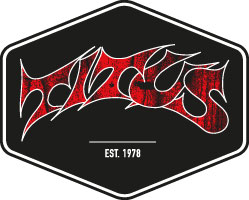The sole
When you purchase a shoe, you should make sure that it actually is a skate shoe. Skate shoes have a rubber sole, a requirement for maximum grip. Various damping technologies offer comfort; flexibility ensures great board feeling. Various materials guarantee durability. Soles are available in two different versions.
CUP SOLE (-> Fig. 02)
A cup sole is made of a single piece, and it's glued and sewn to the shoe. The advantages of this kind of shoe are high durability, stability, and good damping. Unfortunately, a cup sole also limits your board feeling.
VULCANIZED SOLE (-> Fig 03)
In contrast to a cupsole, a vulcanized sole is only glued to the upper shoe, and it consists of several parts. Good board feeling is an advantage for the vulcanized sole, but you have to make cuts in stability.
Seams and care
In a way, the seams on footwear are the Achilles heel of skateboarders. Due to the abrasion caused by the rough surface of the griptape, the threads on the sew join are usually the first things to go. Although there are shoes that are sewn more than once, it makes sense to upgrade the seam before you go skating with your shoes. We recommend special footwear adhesive (e.g. Shoe Goo (-> Fig. 04)). Simply apply a thin layer of glue onto the seams and let it dry. If you want to avoid trouble with the seams altogether, you should consider shoes with a seamless toecap.
Low, mid or high?
Most skateboarders swear by low-cut shoes (-> Fig. 01C). The reason for that is that the ankle lies free and is therefore able to move freely and perform any flip-motion properly. Mid-range- or medium -versions (-> Fig. 01B), which only reach up to the ankle offer a compromise between protection and freedom to move. High-cut shoes (-> Fig. 01A) have the advantage that they not only protect your ankles from sudden attacks of your board, but stabilize them as well. The disadvantage, however, is a limited freedom to move.




